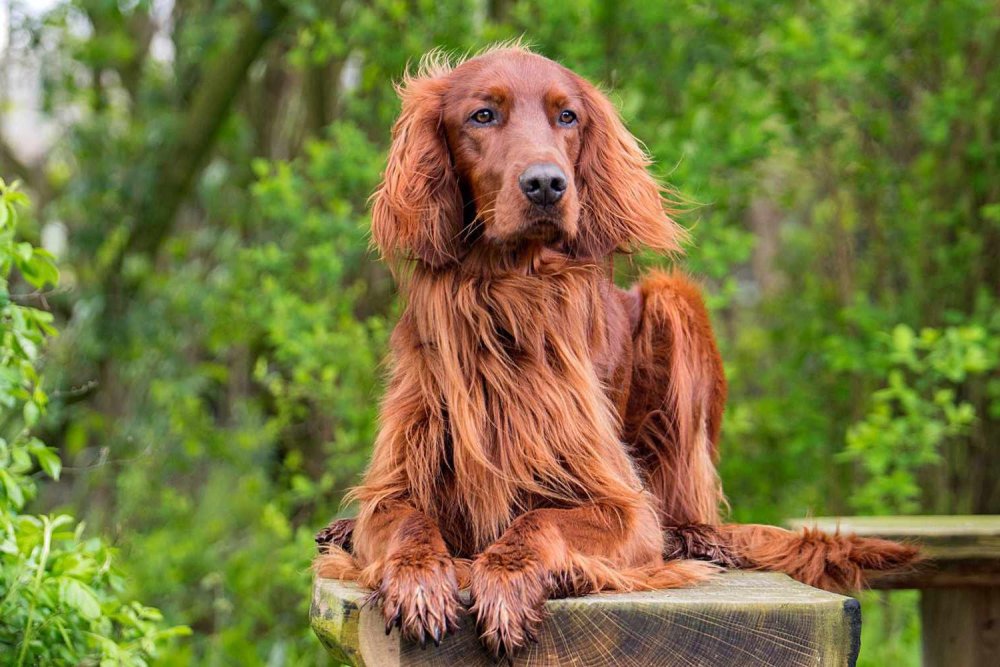Did you know that Setters, with their elegant stature and flowing coats, have been cherished companions for over 400 years? These graceful dogs, known for their hunting prowess, belong to a group of breeds that includes the Irish Setter, English Setter, and Gordon Setter. Each has its own unique charm and characteristics, yet they all share a common heritage of being exceptional bird dogs. This article aims to delve into the fascinating world of Setters, exploring their rich history, distinctive traits, and the care they require to thrive. Whether you’re a seasoned dog owner or considering welcoming a Setter into your home, understanding these aspects will help you appreciate the breed’s enduring appeal.
History and Origin of Setter Breeds

Early Development of Setter Breeds
Setters have a storied past that dates back to the 16th century. Originally bred in the British Isles, these dogs were developed to assist hunters in locating game birds. Their name comes from their unique hunting style, where they would “set” or crouch low to the ground, indicating the presence of birds. This behaviour was particularly useful before the advent of firearms, as hunters would use nets to capture the birds.
Role in Hunting and Field Work
Setters are renowned for their keen sense of smell and ability to cover large areas of ground with ease. Their role in hunting was crucial, as they could locate and point out game birds with precision. This made them invaluable companions for hunters, especially in the vast and varied landscapes of Europe.
Key Historical Figures
Several notable figures contributed to the development of Setter breeds. Edward Laverack, often referred to as the “father of the English Setter,” played a significant role in refining the breed’s characteristics in the 19th century. His work laid the foundation for the modern Setter, focusing on both appearance and hunting ability.
Physical Characteristics of Setters

Appearance
Setters are known for their striking appearance, which is both elegant and athletic. They typically stand between 60 to 70 centimetres tall at the shoulder, with a well-proportioned build that exudes grace and strength. Their coats are a standout feature, often long and silky, flowing beautifully as they move. Coat colours vary among the different Setter breeds. The Irish Setter is famous for its rich, mahogany red coat, while the English Setter boasts a speckled pattern known as “belton,” which can be blue, orange, or lemon. The Gordon Setter, on the other hand, is distinguished by its black and tan colouring.
Unique Physical Traits
One of the most distinctive traits of Setters is their feathered coat, which adds to their regal appearance. This feathering is most prominent on their ears, chest, legs, and tail, giving them a unique and sophisticated look. Their elegant build is complemented by a long, graceful neck and a head held high, showcasing their alert and intelligent expression. These physical traits not only make Setters visually appealing but also contribute to their agility and endurance in the field.
Temperament and Behaviour of Setters

Typical Personality Traits
Setters are known for their friendly and outgoing nature. They’re intelligent dogs, always eager to learn and please their owners. This intelligence, combined with their energetic disposition, makes them both engaging companions and effective working dogs. Their zest for life is infectious, and they thrive on interaction and activity.
Suitability as a Family Pet and Working Dog
These dogs are versatile, fitting well into family life while also excelling in roles that require stamina and focus. Their gentle and affectionate nature makes them great family pets, while their strong work ethic and keen senses make them ideal for hunting and field work. They adapt well to various environments, provided they receive enough exercise and mental stimulation.
Interaction with Children and Other Animals
Setters generally get along well with children, displaying patience and playfulness. Their sociable nature extends to other animals, making them a good choice for multi-pet households. However, early socialisation is key to ensuring harmonious interactions. With the right guidance, Setters can be a delightful addition to any family.
Training and Exercise Needs for Setters

Importance of Early Training and Socialisation
Getting a head start on training and socialisation is crucial for Setters. These dogs are naturally curious and energetic, so introducing them to various environments, people, and other animals early on helps them grow into well-rounded adults. This early exposure reduces the risk of behavioural issues and ensures they adapt well to different situations.
Recommended Training Techniques
Setters respond best to positive reinforcement techniques. They thrive on praise, treats, and play, making these effective tools for training. Consistency is key, as is keeping sessions short and engaging to match their attention span. Incorporating games and activities they enjoy can make learning fun and effective.
Daily Exercise Requirements and Activities They Enjoy
Setters are active dogs that need plenty of daily exercise to stay happy and healthy. A mix of walks, runs, and playtime in a secure area is ideal. They love activities that challenge their minds and bodies, like fetch, agility courses, or even swimming. Regular exercise not only keeps them fit but also helps prevent boredom-related behaviours.
Health and Lifespan of Setters

Common Health Issues
Setters, like many purebred dogs, can be prone to certain health issues. Hip dysplasia is a common concern, affecting their mobility and comfort. They may also experience eye conditions like progressive retinal atrophy, which can lead to vision problems. Regular vet check-ups are essential to catch these issues early.
Average Lifespan and Health Tips
Setters typically enjoy a lifespan of 10 to 12 years. To help them live a long, healthy life, a balanced diet and regular exercise are crucial. Keeping their weight in check reduces the risk of joint problems, while mental stimulation keeps their minds sharp. Regular grooming is also important to maintain their beautiful coats and prevent skin issues.
Preventative Care Recommendations
- Schedule annual vet visits for comprehensive health checks.
- Ensure vaccinations and parasite control are up to date.
- Brush their teeth regularly to prevent dental issues.
- Monitor their diet and adjust as needed to maintain a healthy weight.
- Provide plenty of exercise and mental challenges to keep them engaged.
Grooming and Maintenance for Setters

Coat Care and Grooming Routines
Setters are known for their stunning, flowing coats, which require regular attention to keep them looking their best. A good brushing session two to three times a week helps prevent tangles and mats, especially in areas with feathering like the ears and tail. Using a slicker brush or a comb designed for long-haired breeds can make this task easier and more effective.
Shedding and Seasonal Grooming Tips
Setters do shed, and you’ll notice it more during seasonal changes. During these times, daily brushing can help manage the extra hair and keep your home cleaner. A bath every few months, or as needed, will keep their coat fresh and healthy. Be sure to use a dog-friendly shampoo to avoid skin irritation.
Regular grooming not only keeps your Setter looking great but also provides an opportunity to check for any skin issues or parasites. It’s a chance to bond with your dog and ensure they stay comfortable and healthy. With a little effort, your Setter’s coat will be the envy of the dog park.
Diet and Nutrition for Setters

Nutritional Needs for Optimal Health
Setters need a balanced diet to maintain their energy and health. High-quality protein is essential for muscle development, while healthy fats support their active lifestyle and keep their coat shiny. Carbohydrates provide the energy they need for their daily activities, and don’t forget the importance of vitamins and minerals for overall well-being.
Foods to Include and Avoid
Include lean meats like chicken or fish, whole grains such as brown rice, and vegetables like carrots and spinach. These provide essential nutrients and fibre. Avoid foods high in artificial additives, fillers, and excessive fats, as these can lead to health issues. Chocolate, onions, and grapes are toxic and should never be given.
Feeding Schedules and Portion Recommendations
Feed Setters twice a day to keep their energy levels stable. Portion sizes depend on their age, weight, and activity level, so it’s best to consult with a vet for tailored advice. Always provide fresh water and monitor their weight to adjust portions as needed. Regular feeding routines help maintain their health and prevent overeating.
Fun Facts and Trivia about Setters
Interesting Tidbits about Setters
Setters are not just pretty faces; they have some fascinating quirks. Did you know that their unique “setting” behaviour, where they crouch low to the ground, was originally developed to help hunters capture birds with nets? This instinctive action is a nod to their rich hunting heritage. Despite their elegant appearance, Setters are known for their playful and sometimes goofy antics, making them a joy to have around.
Famous Setters in Media or History
Setters have made their mark in popular culture and history. One of the most famous Setters was “Big Red,” the star of the 1962 film of the same name, which showcased the breed’s intelligence and loyalty. In the world of literature, Setters have been featured in various novels, often depicted as loyal companions. Their striking looks and charming personalities have made them favourites in both film and print.
Final Thoughts

Setters are timeless companions with a rich heritage and vibrant spirit. Their blend of elegance, intelligence, and playfulness makes them exceptional pets and working dogs. Embracing a Setter means welcoming a loyal friend who thrives on interaction and adventure. By understanding their history, traits, and needs, you can ensure a fulfilling relationship with these remarkable dogs. Consider opening your heart and home to a Setter, and experience the joy they bring.
